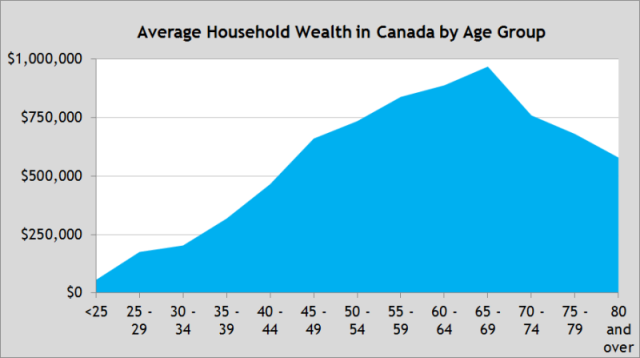Age—the main driver of wealth inequality in Canada
What drives wealth inequality in Canada? That’s a central question of a recent Fraser Institute study authored by Christopher Sarlo, Nipissing University professor of economics. The study should help inform a public debate that is often filled with misperceptions.
The misperceptions are based on some variant of the following statistics. The top 20 per cent of wealthy households in Canada own about 67 per cent of all the wealth, while the bottom 20 per cent of households own less than one per cent. This imbalance has led some to conclude that our economic system is fundamentally flawed.
But that conclusion is misplaced. A deeper understanding of the statistics reveals the vast majority of wealth inequality in Canada is simply due to differences in people’s age and the fact that people accumulate more wealth as they get older. In other words, wealth inequality is largely a fact of life.
So what is wealth? It’s a household’s net worth, including the value of all assets—house, business, stocks, bonds, savings, etc.—minus all debts, such as the mortgage, a line of credit and credit card debt. It is, of course, different than income.
People accumulate wealth slowly and steadily over a long period of time. For example, most Canadians under the age of 25 have little or no wealth since they tend to not have significant assets and take on debt such as student loans in their early years. As a result of the debt and lack of assets, young Canadians naturally have low or sometimes even negative net worth (wealth).
However, as they age and progress through their careers, they pay off debt and begin to acquire assets, like a home and retirement savings, and start to build up their savings—and thus accumulate wealth.
Canadians usually acquire the most wealth when they hit their peak earning years—between 55 and 69—just before retirement. When they retire, they start to draw down savings and, in effect, become less wealthy again.
The chart below presents real-world data from Statistics Canada on average household wealth for different age groups in 2012. It confirms that young households have little wealth while older households have much more. In fact, for Canadians in their late 60s, average household net worth is close to $1 million.

Prof. Sarlo finds that these normal changes in our economic situation as we age are responsible for between 80 and 87 per cent of the wealth inequality in Canada. Put differently, the wealth gap in Canada is almost exclusively explained by people’s stage in life—in other words, their age.
While inheritances explain part of the gap, research from Statistics Canada finds that inheritances explain only between three and five per cent of the wealth gap. Of course, other things also matter including differences in people’s skills and personal characteristic, their preferences and choices, luck, and institutional and policy considerations. But the point is that they are relatively much less important compared to age in explaining wealth inequality. These findings should put into perspective concerns about the distribution of wealth in our country.
Author:
Subscribe to the Fraser Institute
Get the latest news from the Fraser Institute on the latest research studies, news and events.

